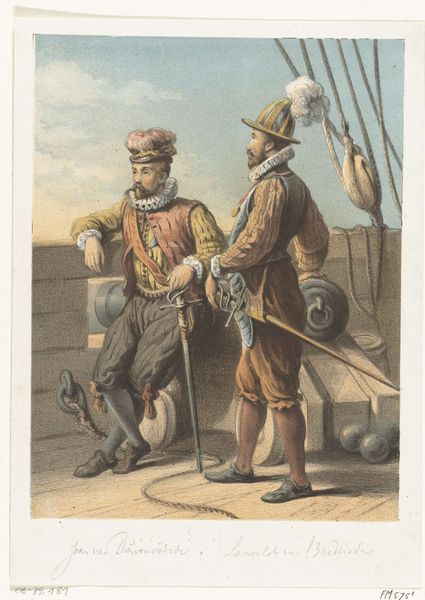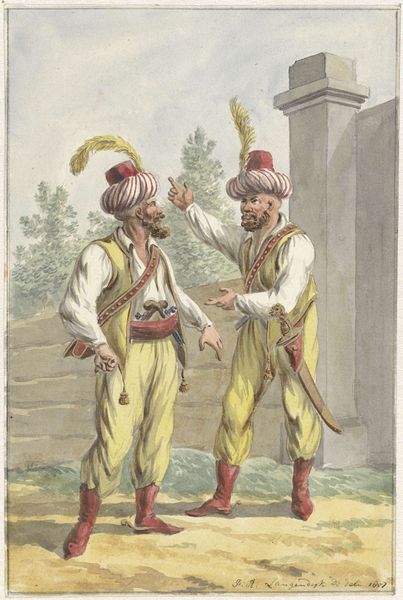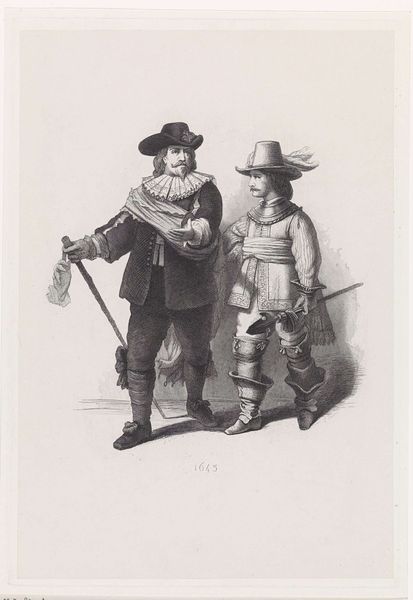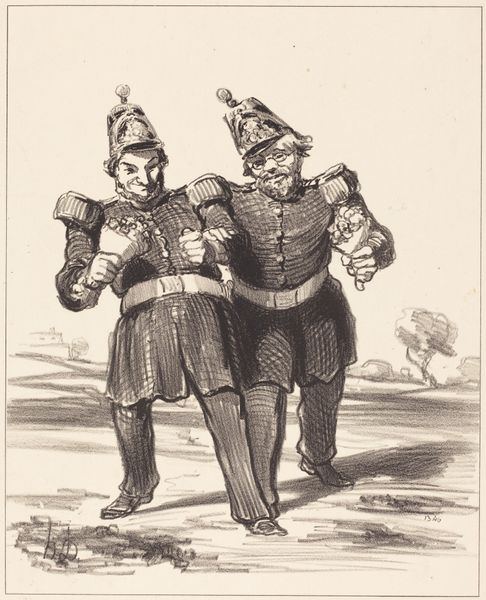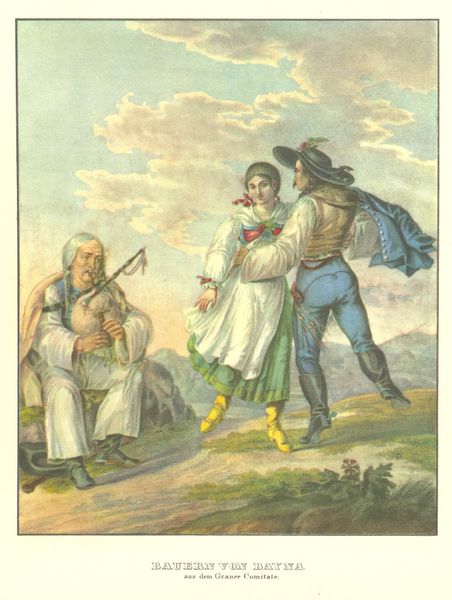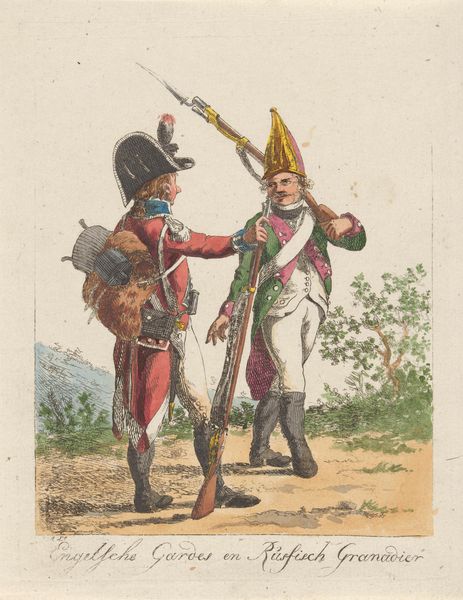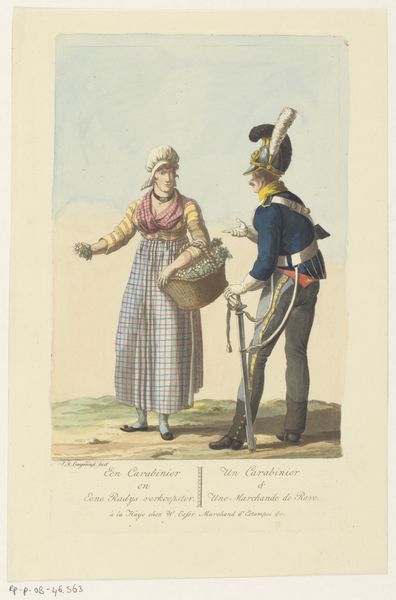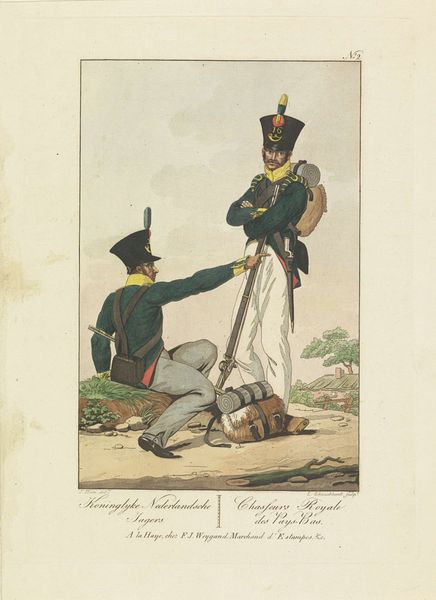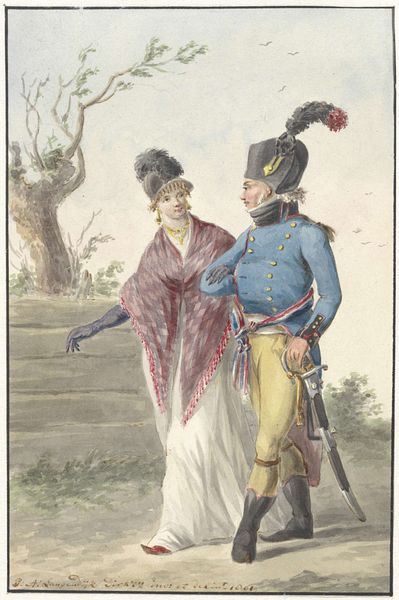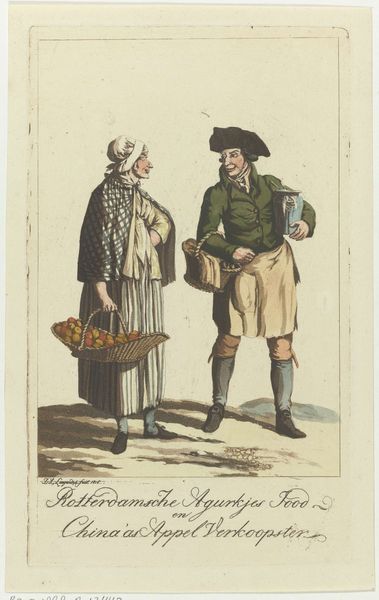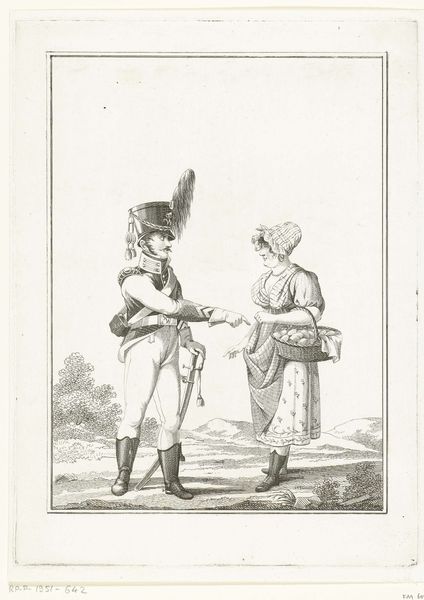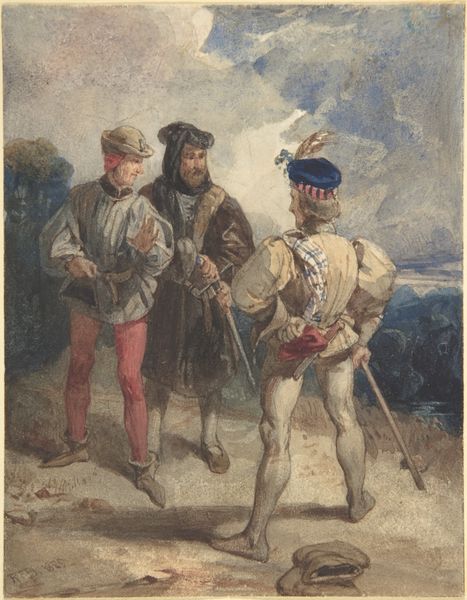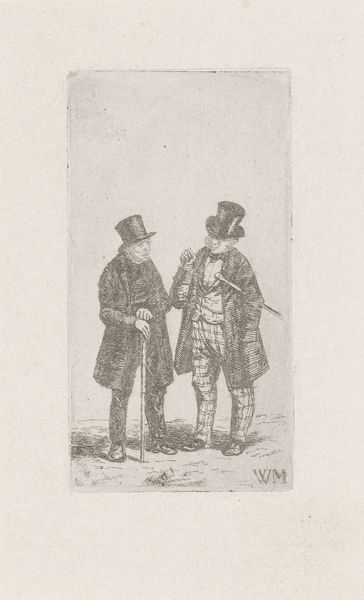
Portretten van de watergeuzen Jacob Cabeljau en Jan Bonga, 1572 1825 - 1899
0:00
0:00
print, engraving
#
portrait
#
dutch-golden-age
# print
#
genre-painting
#
history-painting
#
engraving
Dimensions: height 275 mm, width 202 mm
Copyright: Rijks Museum: Open Domain
Curator: Looking at this image, I'm immediately struck by how theatrical it feels, almost like a scene from a play. Editor: That's an interesting reaction. We’re looking at an engraving titled *Portretten van de watergeuzen Jacob Cabeljau en Jan Bonga, 1572*, made sometime between 1825 and 1899, so its depiction of the Watergeuzen or "Sea Beggars" isn't exactly contemporary. These were essentially Dutch pirates who played a key role in the Netherlands' struggle for independence from Spain, their visual history later mobilized during a 19th-century nationalistic foment. Curator: That historical distance certainly impacts how we perceive it. I'm noticing a sense of staged heroism. But despite that remove, the outfits and their posture possess something deeper – symbols perhaps that capture not only courage but also vulnerability amidst upheaval. Editor: You've picked up on some really key details! The figures of Jacob Cabeljau and Jan Bonga are carefully rendered. Their clothing, especially the ruffs, hats, and even their poses, communicate something about status, rebellion, and perhaps even a kind of defiant swagger. This image clearly leans on familiar tropes within Dutch art history while also responding to 19th century ideas about these figures. Curator: I can’t help but look at Cabeljau’s gesture. He's pointing, guiding the viewer—or perhaps giving orders? The hand gesture is one of instruction and perhaps power. Consider also Bonga's arms crossed, embodying a contrasting closed-off sense. These gestures alone present a story. Editor: That is true and well considered. I am intrigued how that action might have played differently depending on where it hung - or in which publication. The print circulated during a moment of solidifying national pride – which imbues these men as essential elements in that project. They have a public, civic purpose in a way. Curator: Understanding it in the context of rising nationalism offers even richer meaning to these symbols, those gestures. I’m leaving with an expanded understanding of memory materialized in images, particularly the relationship to Dutch identity. Editor: Indeed. Examining it through this lens underscores how images aren't just passive representations but active participants in shaping our understanding of the past.
Comments
No comments
Be the first to comment and join the conversation on the ultimate creative platform.
